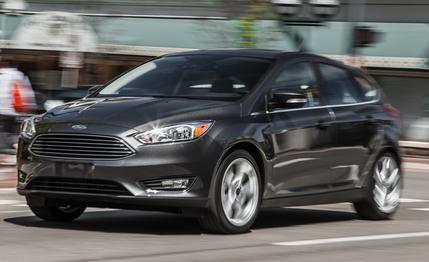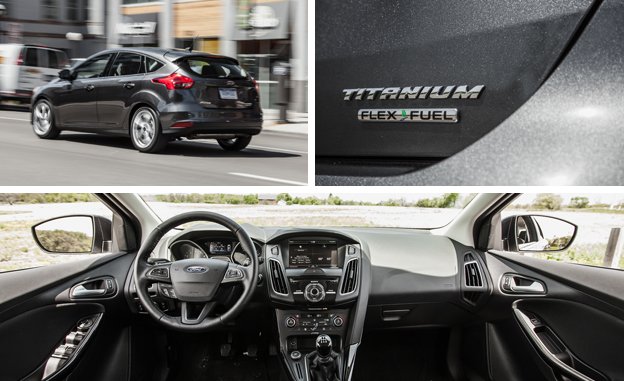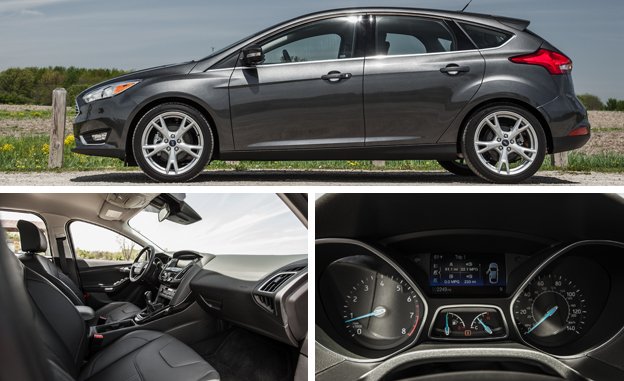
 Instrumented Test
Instrumented Test
Ford has received many well-deserved plaudits for its line of EcoBoost engines—EcoBoost being Ford-speak for turbocharging. But the adulation doesn’t extend to the company’s naturally aspirated powerplants, and a few days with this Focus helps to understand why.
The engine is a 2.0-liter four-cylinder, an oversquare design (bore dimension exceeds the stroke) with variable valve timing, direct injection, and a high (12.0:1) compression ratio. Those tech specs suggest high revs and lots of horsepower, but the reality doesn’t measure up to the suggestion.


Rated for 160 horsepower, this 2.0-liter can’t really be called tepid in terms of horsepower per liter, and 7.9 seconds to 60 mph isn’t exactly glacial. On the other hand, it’s hard to see a 16.3-second quarter-mile as anything but deliberate, and reducing one’s exposure during passing maneuvers requires at least one and sometimes two downshifts.
The limiting factor here isn’t so much the engine output as the car’s economy-minded gearing. The final-drive ratio (3.82:1) is tall, and fifth gear (0.81:1) in the manual transmission is distinctly overdriven, a combination that keeps the engine well out of what sweet spot it has (around 4500 to 5000 rpm). The result is sluggish top-gear performance. Check the 30-to-50- and 50-to-70-mph passing times, which are, well, lengthy—particularly when you’re in the oncoming-traffic lane, there’s a car coming, it’s getting bigger, and you’re committed to the pass. Definitely time for a downshift, or two.
The gear ratios were undoubtedly chosen for mpg, not mph. EPA ratings are 26 mpg city, 36 highway. In our efforts to summon haste from this setup, we recorded only 25 mpg over the course of the test.
Why would we push this intended fuel-sipper into thirst? Because the rest of the package is as eager as the powertrain is reluctant, with athletic responses, modest roll, and well-controlled body motions. The electric power steering is surprisingly quick (2.3 turns lock-to-lock) and, even more commendably, quite accurate.


Also surprising: the serious grip from the Pirelli P Zero Nero all-season tires—W-speed-rated 235/40s on a set of eye-catching 18-inch aluminum wheels. The 18-inch wheel/tire package is optional ($625), and contributed to a 0.89-g performance on the skidpad, with only modest understeer. It also inspires confidence in high-speed sweepers. And yet, the Focus needed 180 feet to stop from 70 mph, exhibiting slight brake fade at the test track. With such sticky rubber, we expected better.
Titanium is the top trim level in the Focus family, augmented here with a $795 tech package (blind-spot alert, rear cross-traffic alert, and lane-keeping assist) and navigation, also $795. They pushed the grand total to $26,710—or about what you’d pay for a 252-hp Focus ST. If serious haste isn’t a priority, you could think of the Focus Titanium this way: ST responses, with better ride quality and no torque steer. But we’ll take the Focus with a powertrain as sporting as its chassis.